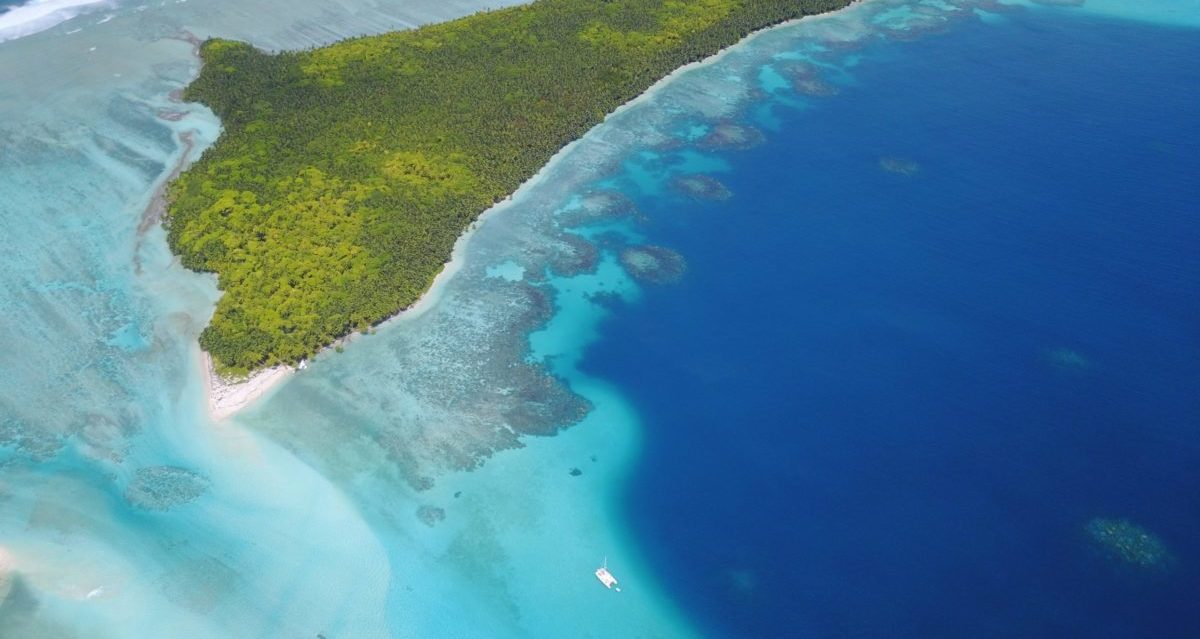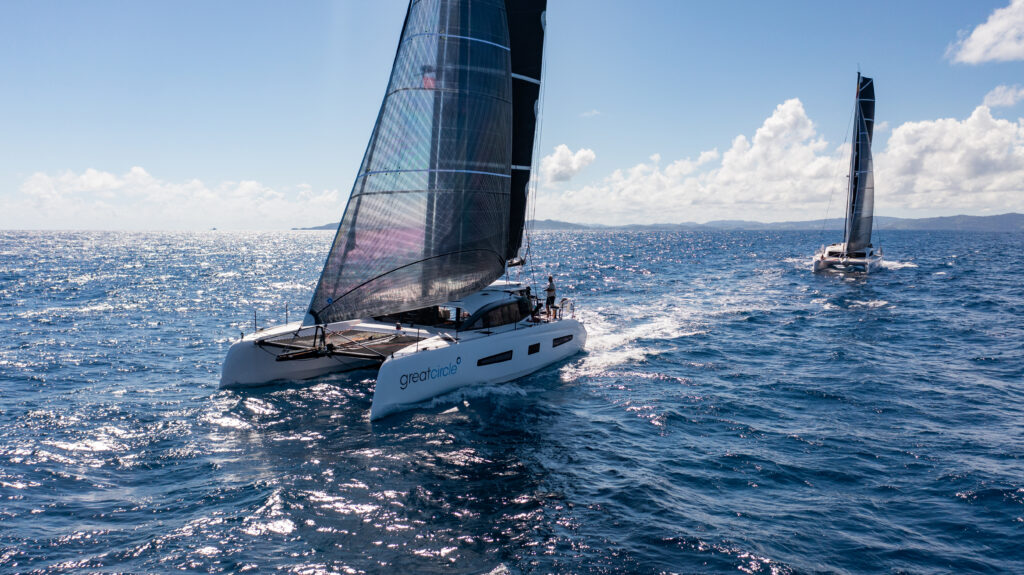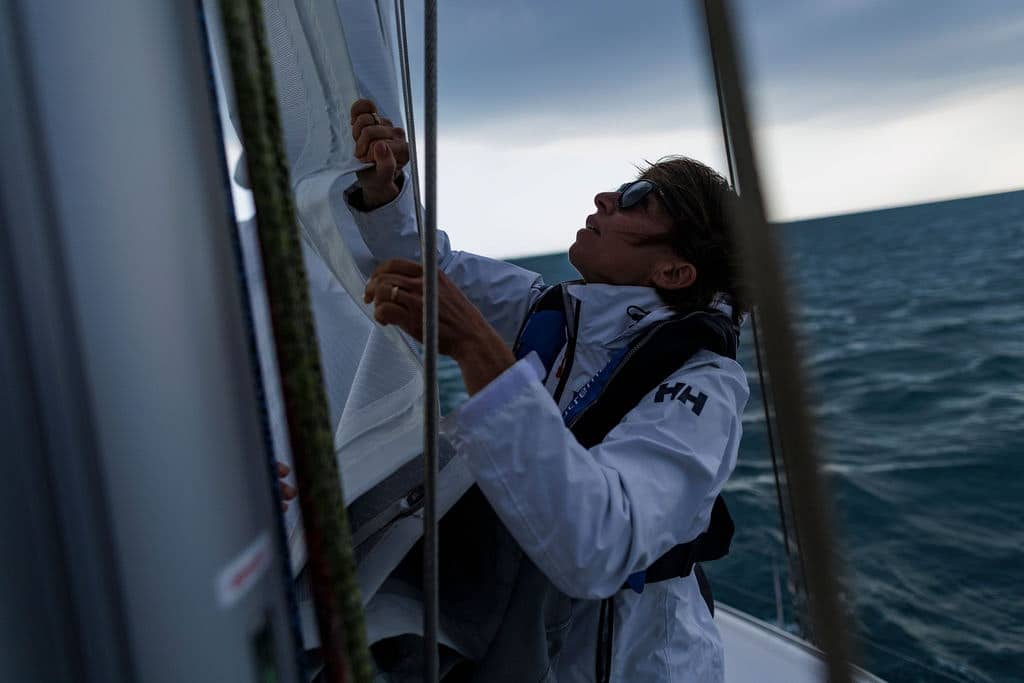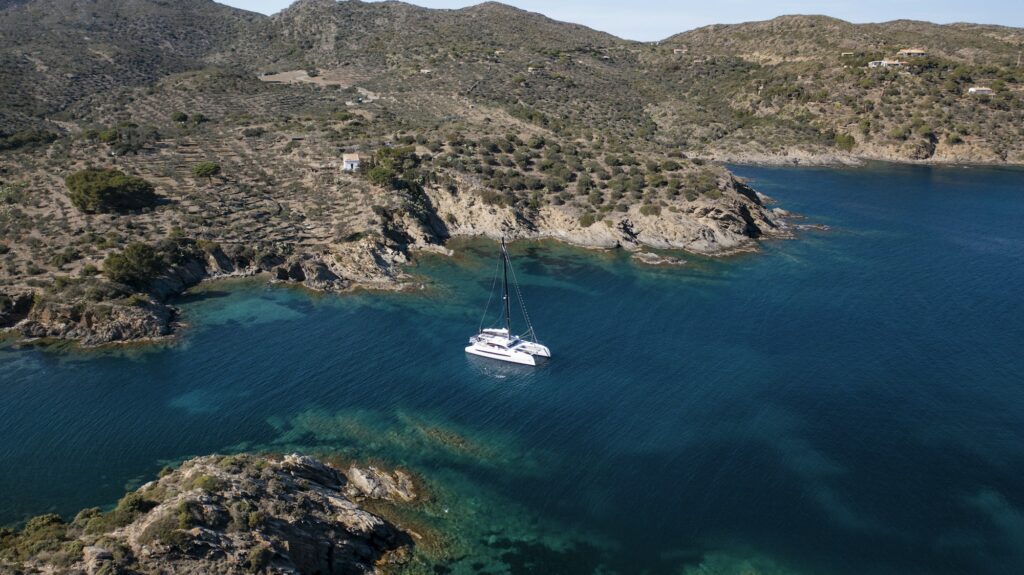Setting off around the world in a multihull, perhaps aboard a catamaran… It’s a dream come true! On the trade winds route, in the Atlantic, the Pacific or the Indian Ocean… Let’s discover together, in this article written with Bénédicte, owner of an Outremer 55, the most beautiful round the world stopovers not to be missed.
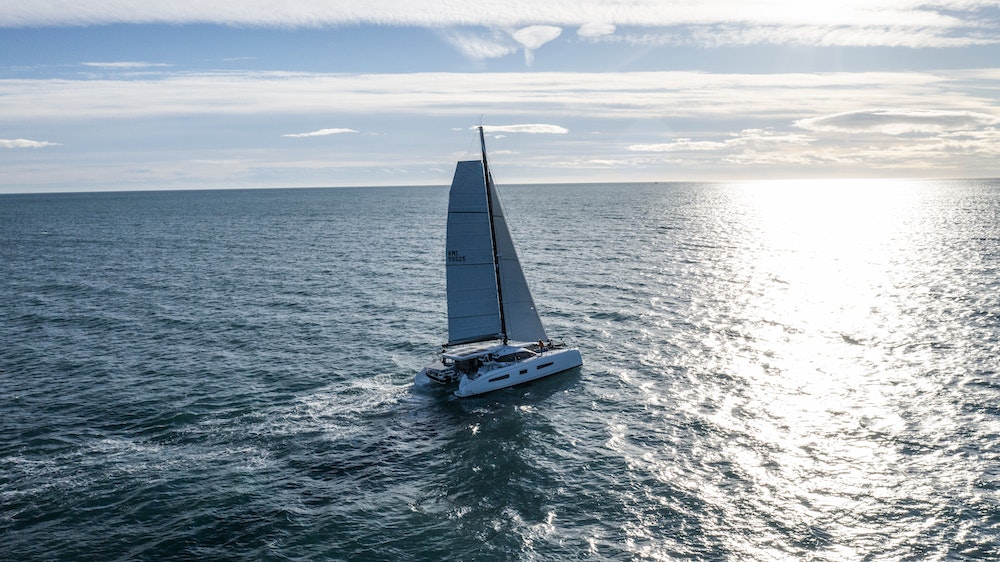
It was the expedition of the Portuguese explorer Magellan in the 16th century that led to the first circumnavigation of the globe under sail. Setting off with five ships in search of a passage between the Atlantic and Pacific oceans, the navigator discovered what would later be known as the Strait of Magellan. The explorer’s reduced squadron continued sailing from east to west around the world, and a single ship completed the circumnavigation. Three years later, he returned to his starting point in Spain and achieved the feat of the first circumnavigation by sailboat.
Even today, sailing around the world is a dream come true. Fortunately for us sailors, today’s conditions are very different and the adventure is much more accessible! It’s now possible to set off on a trip around the world fully equipped. Whatever corner of the globe you find yourself in, you can take advantage of the best instruments to help you navigate and guide you. You’ll also have the luxury of staying connected, so you can check the weather forecast, keep in touch with your loved ones and, above all, stay safe.
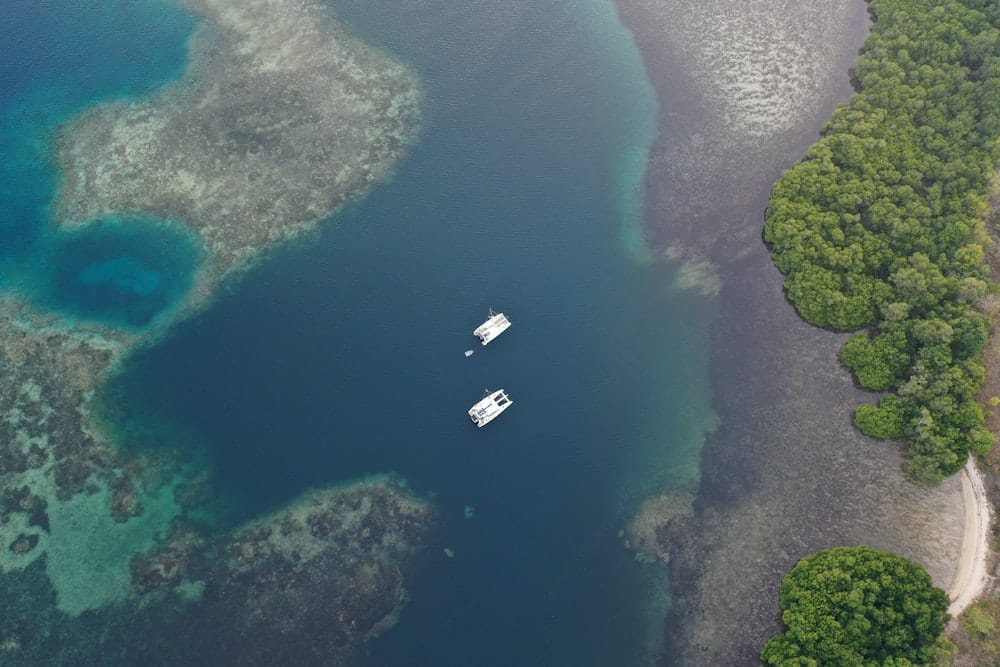
Among multihull owners, Bénédicte Hélies can testify to this! She has been on two round-the-world catamaran voyages with her husband and children, and this is not the first time:
For her first voyage – aboard the Outremer 51 #39 named Moby, the family chose to follow the trade winds. Bénédicte, Loïc, Victor, Arthur and Anna headed for the world’s most famous ports of call, to discover 32 countries and 121 islands. All this in three years and 50,000 nautical miles aboard their catamaran on three oceans: the Atlantic, the Pacific and the Indian.
For their second circumnavigation under sail, this time aboard Saga – l’Outremer 55 #1, the crew is this time opting for new stop-off points, which were not part of the first itinerary. Still sailing from east to west, the family made stops off the beaten track, which they later recounted in the blog Le voyage de Saga.
At the heart of this second adventure, Bénédicte agreed to help us write this article, sharing her best tips for a great catamaran voyage.
Read also: Meet the GLYWO 500 crew: Marijke & Mark on an Outremer 55
Ports of call while sailing around the world, on the trade winds route
The Trade Winds route is the classic itinerary followed by most ocean-going catamarans. It promises crews the chance to sail around the world pushed by the wind, downwind, as long as they follow the rhythm of the seasons. It’s possible to sail a catamaran from east to west, crossing three oceans and stopping off at some fantastic destinations.
Leaving Europe, the yachts and their crews generally start by making a transatlantic crossing to the West Indies. They then sail through the Panama Canal to the Pacific Ocean, where they make several stopovers. They then sail, usually via the Torres Strait, to Indonesia and then the Indian Ocean.
From here, there are two ways to reach Europe: via the Suez Canal to the Mediterranean, or around the Cape of Good Hope to the Atlantic. With this second option, crews then generally cross the South Atlantic, followed by a final transatlantic crossing from west to east, in the northern hemisphere.
The first Atlantic legs, from Europe to the West Indies
You will probably start your journey from the Atlantic coast or the Mediterranean Sea. After crossing the Bay of Biscay or the Strait of Gibraltar, you’ll head for the Canary Islands and Cape Verde. Here, you can make your first wonderful discoveries, among friendly people who are used to the passage of voyaging yachts. These destinations are renowned for their sailing sports!
Some crews then stop off in Senegal, where they can also drop off humanitarian supplies taken on board in France. It’s not just a great cruise, it’s also an opportunity to help others…
Then it’s off to the West Indies. After your first transatlantic ocean crossing lasting several weeks, you’ll be able to envisage shorter crossings, between numerous islands that are well worth the diversions. From north to south: the British Virgin Islands, Anguilla, Saint-Martin, Saint-Barthélemy, Antigua, Guadeloupe, Dominica, Martinique, Saint Lucia, Saint-Vincent and the Grenadines, the islands of Trinidad and Tobago… All these destinations promise a sunny end to the year, as well as particularly pleasant sailing conditions. You’re sure to enjoy some exotic experiences!
If you have a little time before passing through the Panama Canal, you could consider sailing to the ABC islands of Aruba, Bonaire and Curaçao, off the coast of Venezuela, which are ideal for water sports. The Cartagena region of Colombia may also be worth a visit.
Finally, before crossing the Panama Canal, the San Blas are a particularly popular destination for tour-dumondist sailors: highly renowned for sailing, the archipelago offers the chance to sail from islet to islet in idyllic landscapes…
In the Pacific Ocean, from the Panama Canal to Australia
After passing through the Panama Canal, you’ll continue to be amazed. A multitude of magnificent destinations await you in the largest ocean on our planet: the Pacific.
After exploring the Pacific coasts of Panama and Costa Rica, the Galapagos archipelago in Ecuador is a comfortable stopover before the trans-Pacific. From there, you can head for the Marquesas Islands and sail through the enormous territory that is French Polynesia, to discover all its riches!
Following in the footsteps of many other sailors, you can stop off in the Tuamotu archipelago, the Windward Islands, the Leeward Islands or, even further afield, the Austral Islands. A word of advice: allow plenty of time to get there, as the distances are great and the destinations are all magnificent… The programme is packed: discover the islands and pearl farming, snorkelling, diving and underwater fishing.
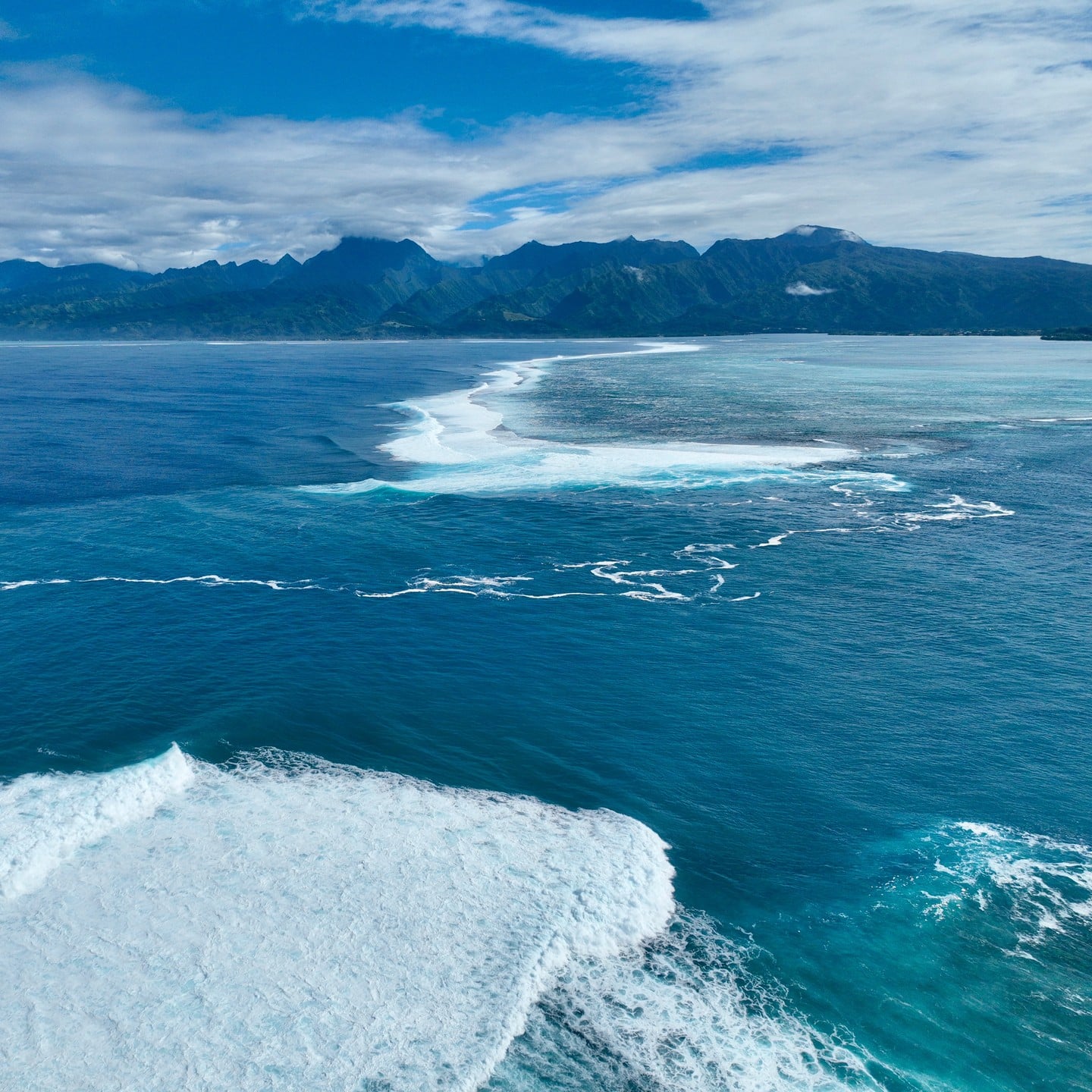
Bénédicte and her family chose to visit the Gambier archipelago: “In Polynesia, to get off the beaten track, we chose to head for the Gambier archipelago. Getting there from Panama is demanding: nearly 3 weeks at sea, at less downwind than usual, on a beam. But with a 55-foot catamaran like ours, that’s no problem. The Gambier archipelago alone is a concentration of the best of the Marquesas, the Tuamotus and the Leeward Islands. As in the Tuamotus, there are motus and a magnificent coral reef with a rich underwater fauna. We had a wonderful time, both underwater and on land! There’s a very strong culture here, with very warm values of sharing and hospitality. It’s easy to make contact, especially when it comes to bartering for the fruit and vegetables that grow in the inhabitants’ gardens, just like in the Marquesas Islands. As in the Leeward Islands, you can enjoy lovely walks and hikes in the forest, along well-kept gardens, with magnificent views from the summits. You can also visit pearl farms producing some of the finest pearls in the Pacific.”
Many yachtsmen are won over by French Polynesia. Arriving at the furthest point on the globe from France, they often feel they have found the most beautiful place on earth and sometimes decide to call it a day. However, further down the road, there are so many other wonderful destinations to explore on a catamaran!
As you continue westwards, still in the South Pacific, you’ll discover other countries and peoples that are well worth a stop. In the Cook Islands, the Samoan archipelago, Tonga and Wallis and Futuna, your sails will take you to magical places, where you’ll come into contact with people who are, once again, very welcoming. In Fiji, you’ll enjoy traditional villages and numerous spots perfect for water sports. The stopover in Vanuatu should also provide you with some unique experiences…
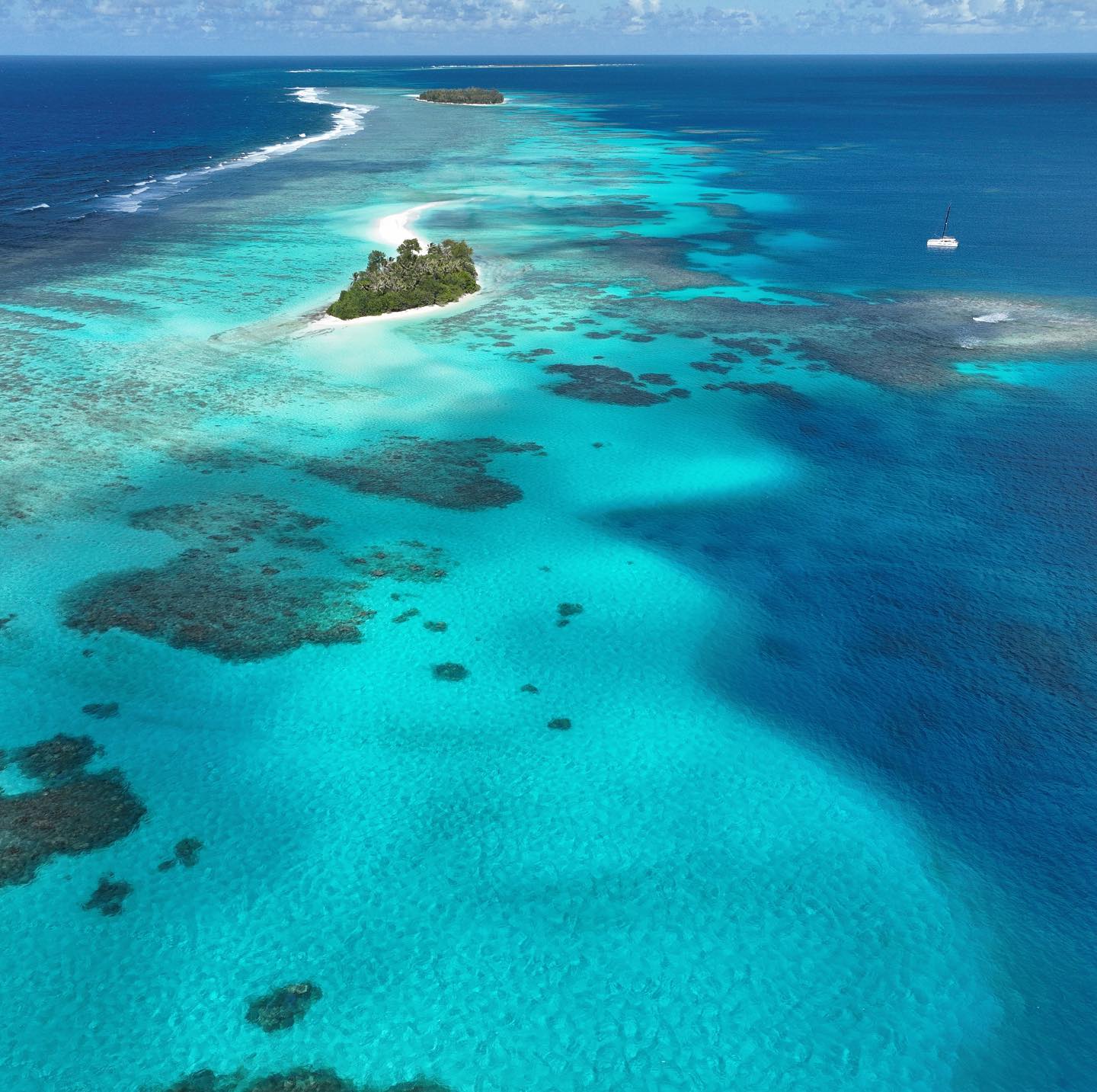
On the subject of New Zealand, Bénédicte confides: “Everyone thinks that it can only be visited by van, but it’s a well-kept secret that it can also be visited by sail! It offers three exceptional sailing basins, each with dozens of safe anchorages, splendid panoramas, magnificent walks and easy access to supplies. Not to mention the restaurants and vineyards!”
Finally, New Caledonia and Australia are also good stopping-off points before leaving the Pacific: as well as a change of scenery, you’ll find everything you need to maintain and refuel your catamaran before continuing your journey.
From the Torres Strait to the western Indian Ocean
While some yachts opt to sail around Australia, most take the Coral Sea and Torres Strait to reach the Indian Ocean. Explore Papua and the Raja Ampat archipelago, East Timor and the Komodo dragons, Borneo and the orang-utans, or enjoy cultural adventures and idleness in the world’s largest archipelago: Indonesia!
Some crews choose to sail all the way back to Thailand, sometimes leaving their boat in the town of Krabi for a while.
One of the little-known destinations on our westward journey is the small Australian archipelago of the Cocos (Keeling) Islands: a stopover in the Indian Ocean that Bénédicte describes as “very interesting from every point of view”. She remembers an excellent anchorage, a magnificent stretch of water for wingfoiling, a pleasant and friendly beach, and some great snorkelling sessions. On the neighbouring islet, which is inhabited, there are also plenty of opportunities for cultural visits!
After that, the journey continues, sailing across the Indian Ocean to Mauritius, the Maldives, the Seychelles or Reunion Island. For Bénédicte, Mauritius should be much more than just a stopover: “It’s the traditional stopover on a crossing of the Indian Ocean, where the boats think about stopping off, content to stay in Port Louis. It’s true that it’s a nice stopover, with the Caudan marina, its large open shopping arcade, its museums, its lively market, its restaurants… But Mauritius can also be visited by sail! On two occasions, with both Saga and Moby, we sailed around Mauritius, stopping at various anchorages: on the east coast, at Trou d’Eau Douce – which gives access to Ile aux Cerfs, Mangénie islet, Mahébourg – an old colonial town – and Blue Bay marine park; on the west coast, at Rivière Noire – which gives access to Gorges park – and Tamarin, with its surf beach and magnificent sunsets. Finally, to the north, Grand Baie and the surrounding area offer lively, beautiful beaches and several other pleasant little anchorages.”
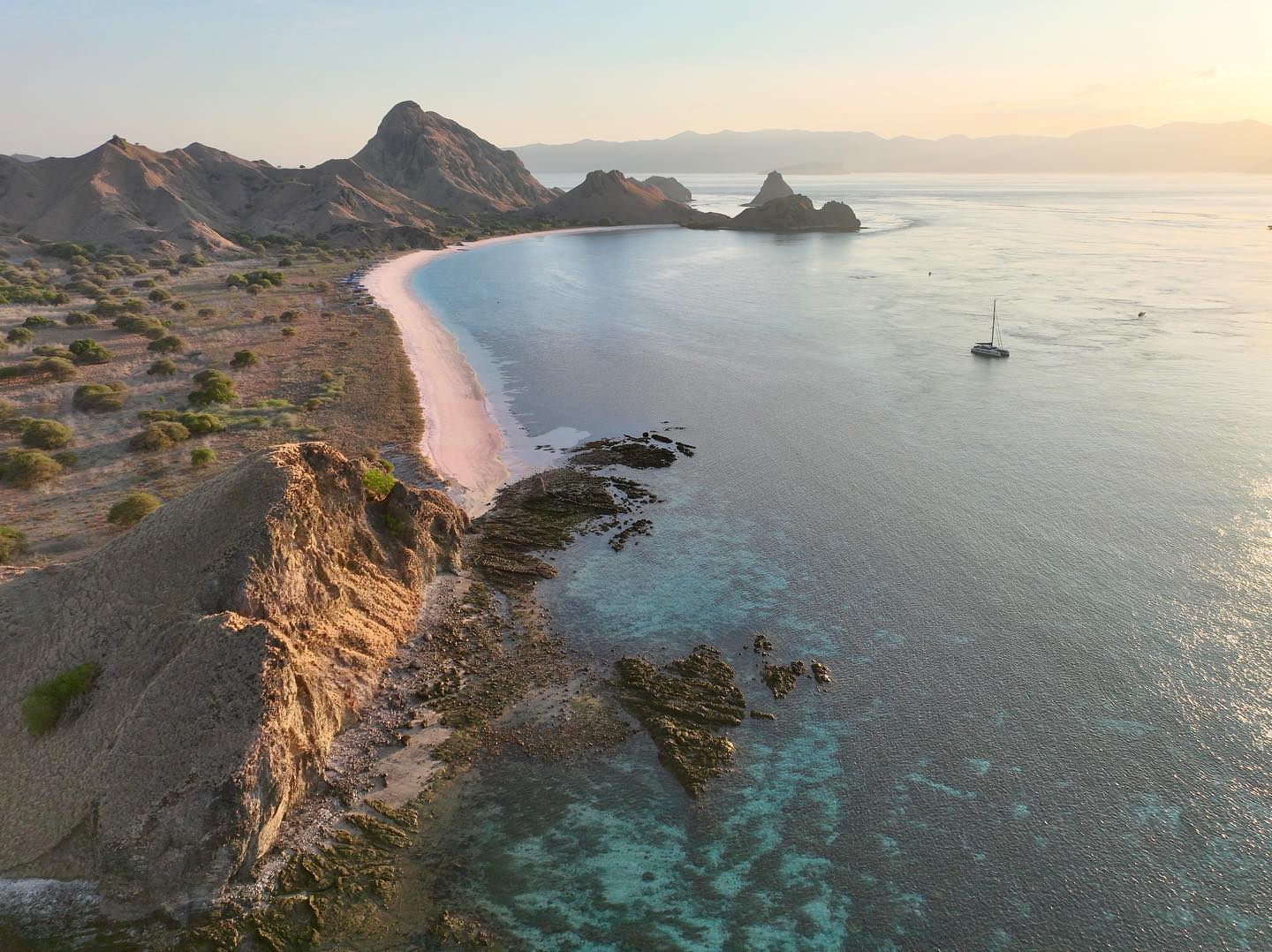
As well as this well-known destination, the yachtswoman recommends visiting other territories in the Indian Ocean: “The Chagos Islands, for example, are a nature reserve teeming with birds and fish! There are thousands of coconut crabs, frigate birds, dolphins and dolphinfish in the inner lagoon, as well as a wealth of underwater life. You can spend a maximum of three weeks here, with permission. And it’s a privilege to witness such a wild and abundant nature”. The deserted archipelago of Saint-Brandon is also well worth a visit: “It’s a well-known destination for yachtsmen from Mauritius and Reunion, where you’re guaranteed a change of scenery! It’s a semi-enclosed atoll made up of dozens of islets of varying sizes, renowned for its seabed and fishing. When it comes to board sports, it’s paradise: there are exceptional kitesurfing and wingfoil spots, wild beaches with rare shrubs and thousands of birds.”
n the end, Rodrigues is a small island with an old-fashioned, tranquil atmosphere, which the traveller still recommends: “We spent ten fantastic days sailing there. The island is very welcoming and offers two anchorages: in town, at Port Mathurin, and at Port Sud-Est. The first offers a very pleasant stopover with a market and small restaurants. The second is a spectacular anchorage on the inner edges of the channel, with direct access to the lagoon and ideal spots for wingfoil and kitesurfing.”
Bénédicte insists that, for her, the Indian Ocean’s great cruising destinations are poorly known and largely underestimated. For her, the Indian Ocean is an “exceptional sailing destination on a catamaran”.
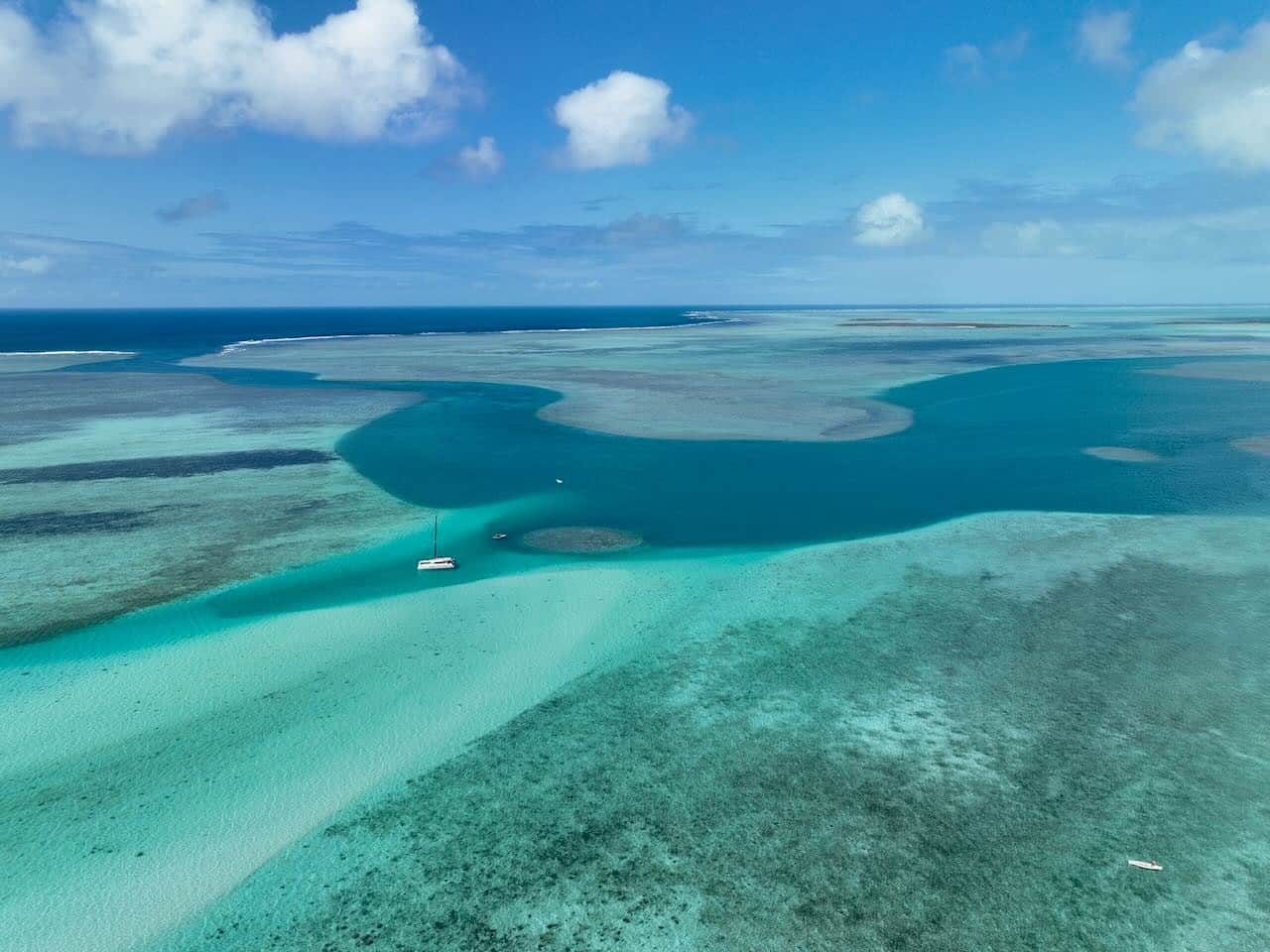
After visiting these destinations, it’s already time for your final stopovers in the Indian Ocean. Depending on the stopover points you have chosen and whether or not you wish to use the Mozambique Channel, you will make a stopover in Madagascar or Tanzania, or head straight for South Africa.
This country will be a compulsory stopover – but also a very pleasant one! – before your second Atlantic crossing: the stopover in Cape Town will allow you to prepare the boat for one of the last ocean crossings, in a port where everything is easily accessible. Here, you can wait comfortably for the right “weather window” to cross…
Sailing back to Europe from South Africa
You will cross the South Atlantic Ocean from east to west. On this occasion, you may make a stop on the territory of Saint Helena. But where to next?
In the Western Atlantic, before returning to Europe, you may be tempted to make the same stops as on your first passage. But if you want to see more, your round-the-world catamaran trip could be the perfect opportunity to visit some new destinations! Brazil, the Bahamas, Bermuda and the United States, for example, are still waiting for you.
Finally, for your last ocean crossing, the return Atlantic crossing, you will undoubtedly stop off in the Portuguese archipelago of the Azores. There’s no doubt you’ll meet other crews who, like you, have sailed around the world in a catamaran. It’s the perfect opportunity for us to look back together at all these beautiful stages…
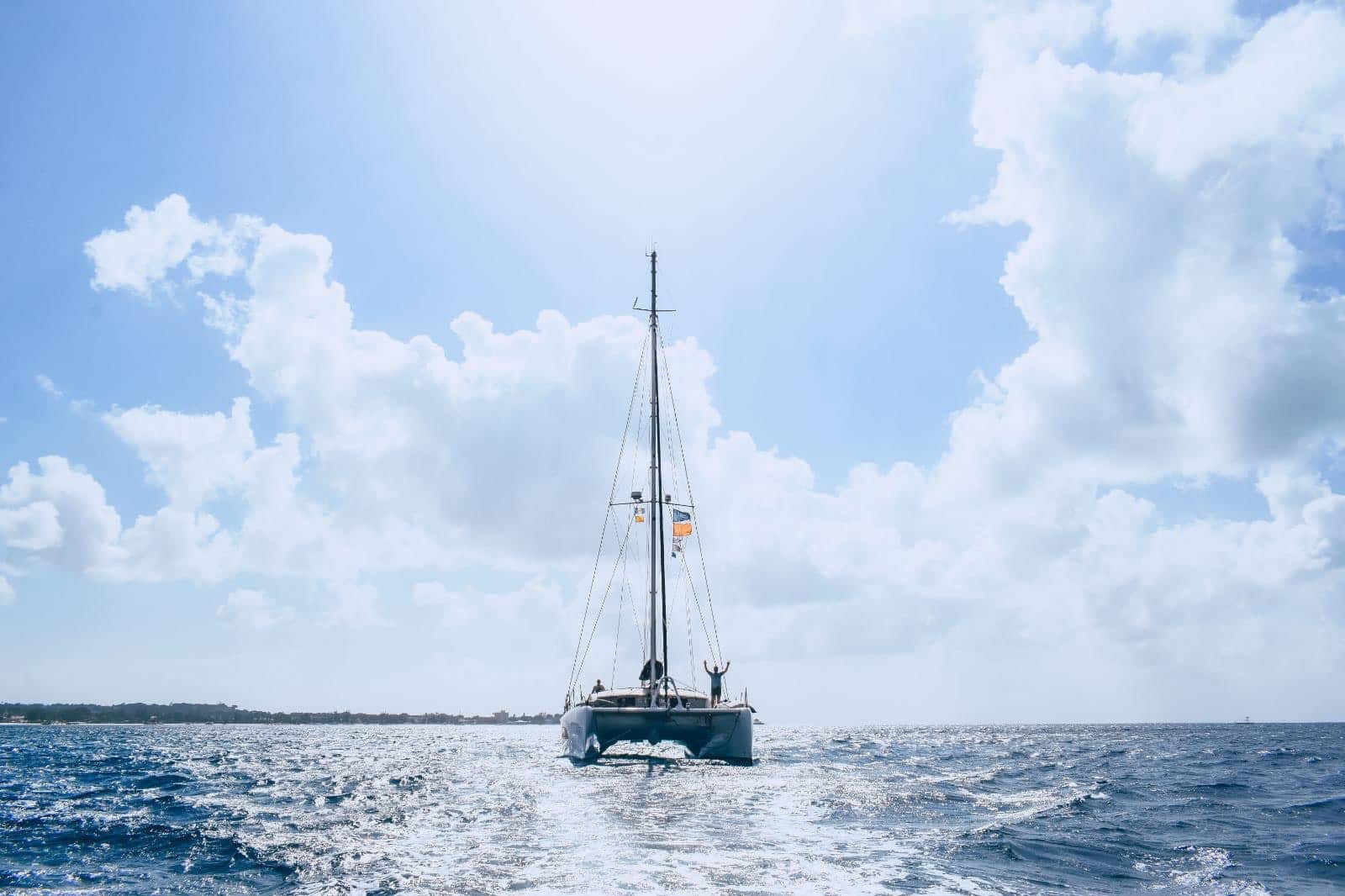
Gone are the days of the great explorations. You probably won’t have the chance to discover unexplored lands by sailing around the world on a catamaran these days. On the other hand, by choosing stopovers off the beaten track, you’re sure to feel like an adventurer! Just what you need to make your round-the-world sailing experience unforgettable…
